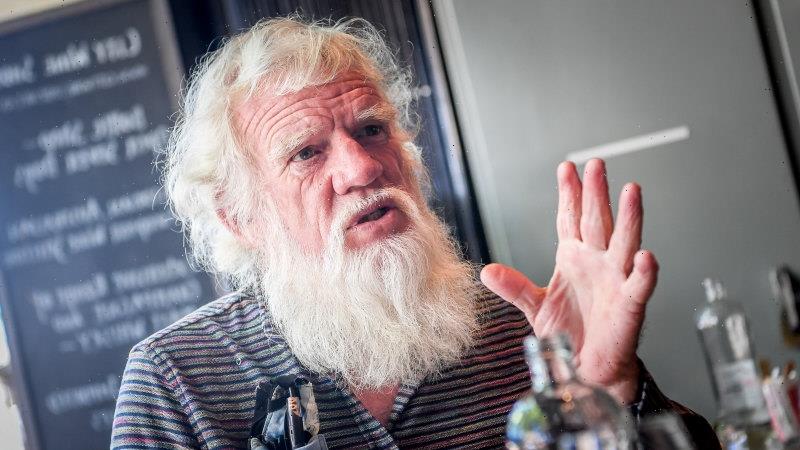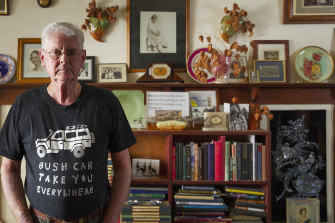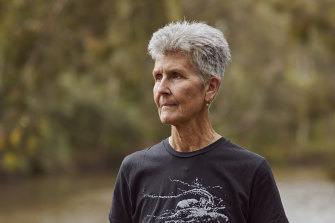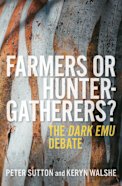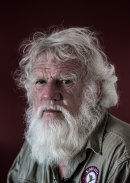Farmers or Hunter-Gatherers? The Dark Emu Debate by anthropologist and linguist Peter Sutton and archaeologist Keryn Walshe is an impressively researched work of scholarship. It is an important intervention in a discussion about the myriad ways in which Indigenous Australians have continued to procure their living from the land and manage the environment.
In this comprehensive, well-written work, Sutton and Walshe pursue a forensic critique of Bruce Pascoe’s book, which was originally published in 2014 as Dark Emu, Black Seeds: Agriculture or Accident? Pascoe wanted to enlighten the public by reassessing Indigenous Australians’ ways of living not as “mere hunter-gatherers” (as Pascoe put it), but as farmers and agriculturalists. In my review in Aboriginal History of Dark Emu when it was first published, I considered that, despite concerns about the author’s sources, it was “a powerful argument for re-evaluating the sophistication of Aboriginal peoples’ economic and socio-political livelihoods”.
It was, and remains in some ways, a book for its time, and one that serves a specific purpose.
Peter Sutton says that the agricultural activities of Australia’s Indigenous people were a kind of “spiritual propagation”.Credit:David Solm
Farmers or Hunter-Gatherers? presents a compelling narrative detailing the authors’ perceived problems with Pascoe’s argument and methodology. While acknowledging the positive contributions Dark Emu makes to creating greater interest in understanding Indigenous cultures, this book offers a different, persuasively argued perspective.
It suggests that Indigenous people were hunter-gatherers “plus”, rather than agriculturalists or farmers, with ways of living finely tuned to diverse ecosystems. Significantly, Sutton and Walshe emphasise the cultural or spiritual dimensions of Indigenous peoples’ relationships with the natural world.
Keryn Walshe.Credit:Josh Robenstone
While Pascoe’s book interpreted the scattering of seeds, for example, as being primarily forms of material propagation, as agricultural, or “incipient” agricultural pursuits, Sutton and Walshe propose that these activities were a kind of “spiritual propagation”. That is, they were activities largely shaped by Aboriginal peoples’ “deep commitment to the maintenance of fertility through engagement with the spiritual powers left for them by the Dreaming”.
This “spiritual propagation”, performed in accordance with Aboriginal law, was Indigenous peoples’ way of achieving certainty of supply of plants and animals for foods and other purposes, and it also facilitated environmental conservation. This was a complete system, since, as Sutton and Walshe put it, “the Old People did not see any necessity to go beyond their existing environmental modifications”.
Indigenous land and environment practices form part of a spectrum of ways of interacting with the natural world that embraces all dimensions, including the physical and the spiritual, which are not separate. This view invites thinking about the ways that humans’ relationships with the natural world have contributed to the climate crisis. Can we learn from the kinds of integrated, inclusive approaches to managing our ecological systems that have been observed in Indigenous ways of living, to adopt more ethical, connected ways of relating to the environment?
Credit:
The emphasis in Farmers or Hunter-Gathers? on cultural dimensions of food procurement is welcome. However, Sutton’s notion of Indigenous culture as inherently conservative and not given to creativity may be overstated.
That interactions with plants and animals are sanctioned by ancestral laws and the Dreaming does not diminish the extraordinary creativity and innovation in their culture, expressed through a vast array of forms including art, song and dance. Indeed, this creativity and innovation has provided a foundation for Indigenous peoples’ resilience, adaptability and survival.
Farmers or Hunter-Gatherers? presents its arguments in chapters dealing with language, dwellings and structures, mobility and demography, questions of agency including use of fire, the problem of social evolutionism, clothing and apparel, fishing and trapping practices, stone circles, implements possibly used for “agriculture” and key questions of method, sources and approach.
It is critical of what the authors regard in Dark Emu as an outmoded “social evolutionist” framework, presented as a linear trajectory of “progress”, from “mere” hunter-gatherer to successful farmer. Sutton and Walshe also critique Pascoe’s use of sources, saying that Dark Emu relies too extensively on the records of explorers. Even in using these, they suggest, Pascoe has often not cited the relevant extract from a source in its correct context, thus skewing the interpretation.
Bruce Pascoe’s book relies to heavily on the accounts of explorers, according to Peter Sutton and Keryn Walshe. Credit:Justin McManus
Adding to these problems, Sutton and Walshe argue that Dark Emu neglects evidence derived from Indigenous people themselves, those whom these writers describe as the “Old People” – elders, knowledge holders and custodians. Sutton draws on his long career, much of it spent with Aboriginal people on Cape York Peninsula, mapping country and listening and learning from people about their engagement with it. With this kind of detailed interrogation, the book’s assessment of Dark Emu could open up a positive debate about how we write and tell our nation’s histories.
The authors discuss the ways that ideas and perceptions around “hunter-gatherers”, and about Indigenous culture and society more generally, have been circulated and received in the wider public, including in schools. They claim that what Pascoe offers as “revelatory” information about these important subjects has in fact long been in the public sphere, available in scholarly books, as well as in educational and introductory texts, and in other forms of media including on television.
There has been a re-assessment of the concept of “hunter-gatherer”, at least in academic literature, since the 1960s. Books such as anthropologist Marshall Sahlins’ 1972 Stone Age Economics argued that hunter-gatherer societies were complex and sophisticated, to the extent that Sahlins characterised them as the “original affluent society”. By this, he showed these societies as not “mere subsistence economies”, chained to living impoverished lives, forever bound to the search for sustenance, but ones whose needs were amply met, thus allowing time for leisure and creativity.
What we can also take from this reassessment is a cautionary note about forming stereotypes (such as “primitive Other”, “Noble Savage” or “ecologist par excellence”) and of being trapped in discussions about classification, labels and categories such as “farmer”, “agriculturalist” or “horticulturalist”. The challenge is to see beyond categories and labels, to shift from the language of the colonisers, to understand Indigenous peoples’ distinct and rich cultures in their own terms.
Indigenous peoples’ relationships with the environment demonstrate their deep ecological and place-based knowledge, their intricate ability to map, interpret and engage with their ecologies in sustainable ways. Their ways of obtaining food are fully integrated into other dimensions of living and are imbued with meaning derived from the Dreaming and from the ancestral and totemic domain.
As the anthropologist Hugh Brody put it in The Other Side of Eden: Hunters, Farmers and the Shaping of the World (2000), “the difference between hunter-gatherers and farmers, or between hunter-gatherers and all other peoples, has nothing to do with evolution or with supposed levels of civilisation or development … Each way of life is the centre of its own universe.”
Dark Emu achieved great popularity, and also generated interest across other forms of media, including dance and film. This indicates a public hunger for more information about Indigenous peoples and the extraordinary diversity and resilience of their cultures and societies. It is to be hoped that Farmers or Hunter-Gatherers?, appealing to different audiences, and offering a richly textured alternative interpretation, will add to this conversation and similarly stimulate interest.
This quest for knowledge about Indigenous cultures is vital in the journey towards reconciliation, and a deeper, more meaningful inclusion of Indigenous peoples in the nation.
Farmers or Hunter-Gatherers? The Dark Emu Debate, Peter Sutton and Keryn Walshe,
Melbourne University Press, $34.99.
Michael Davis is an independent historian, researcher and writer specialising in Indigenous heritage and environment. He is an honorary research fellow with Sydney University.
Most Viewed in Culture
From our partners
Source: Read Full Article
